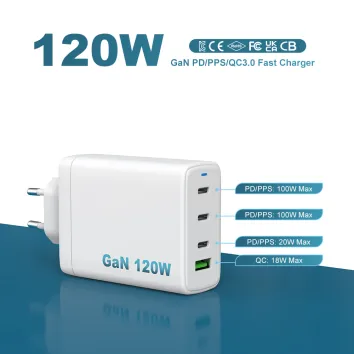What is the industry standard for the maximum temperature of a charger?
Charger reviews often have responses ranging from "gets a little warm" to "scalding hot!!" but these are subjective and cannot be normalized across chargers.
The industry standards for the maximum temperature of chargers follow general safety guidelines, but there can be some variation depending on the power output of the charger. These standards are regulated by organizations like UL (Underwriters Laboratories), IEC (International Electrotechnical Commission), and CE, ensuring that all chargers remain within safe temperature limits, regardless of power.
Are the industry standards for the maximum temperature the same for chargers of different powers?
For chargers in the range of 20W to 65W, the typical operational temperature is between 95°F to 113°F (35°C to 45°C). As you move to higher wattage chargers (e.g., 100W to 300W), the operational temperature can increase to around 122°F to 140°F (50°C to 60°C). However, even at higher outputs, manufacturers design these chargers with features like better thermal control and heat dissipation, such as GaN (Gallium Nitride) technology, which allows them to operate more efficiently and at lower temperatures compared to traditional silicon chargers.
While the safe maximum temperatures are broadly consistent across different wattage ranges, higher-power chargers typically come with more advanced safety measures to handle the extra heat, ensuring they stay within the safe range and avoid overheating, which could lead to fire hazards or damage to the devices. Therefore, the temperature limits for chargers of different powers are aligned with safety protocols, but the methods of thermal management vary depending on the power output.
Here are the links to the official websites of some organizations that set industry standards, including temperature regulations for chargers:
UL (Underwriters Laboratories)
IEC (International Electrotechnical Commission)
CE Marking Standards (European Union)
These organizations oversee safety standards, including those related to temperature limits for electronic devices like chargers.

Read More

Read More

Read More